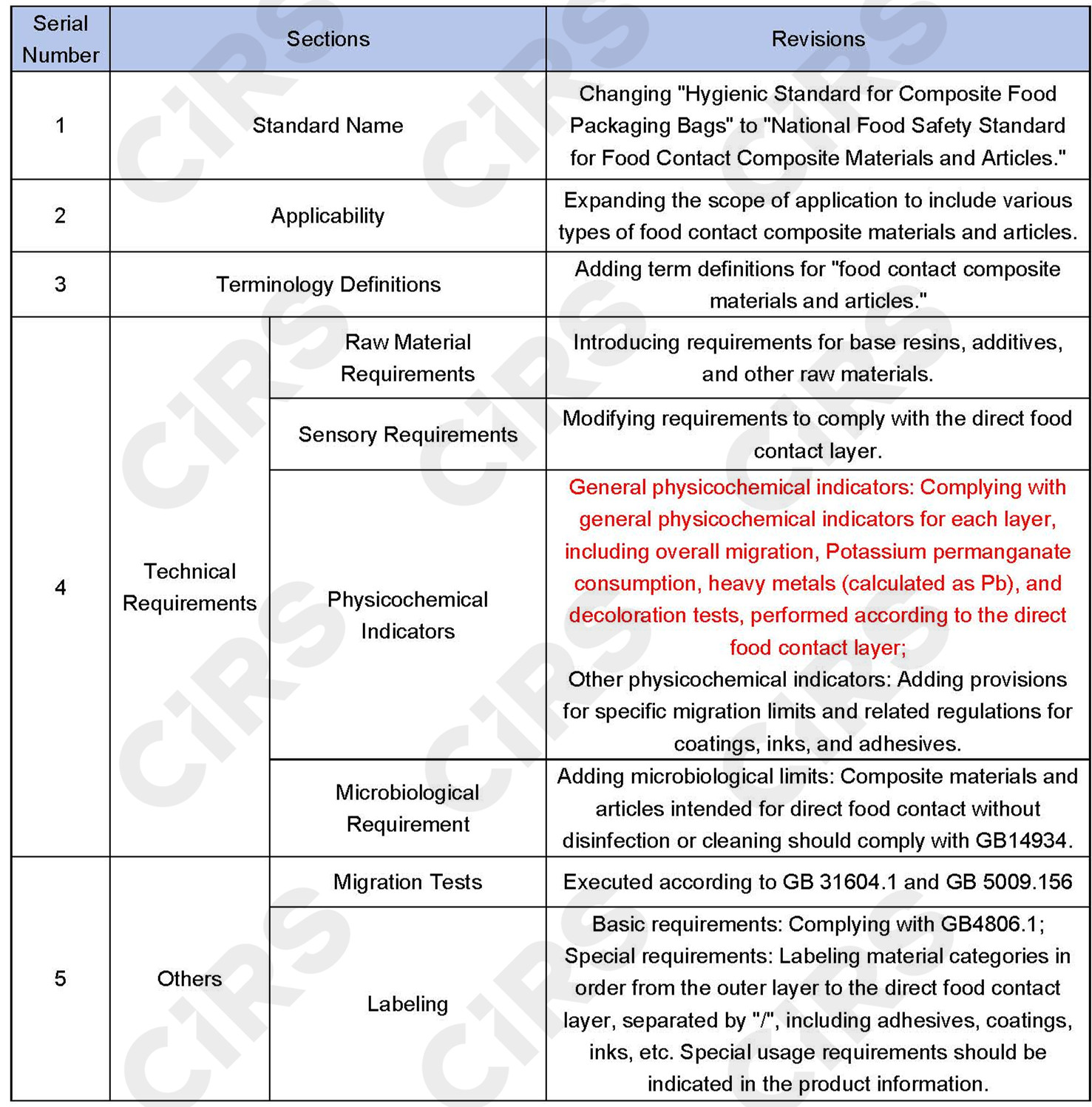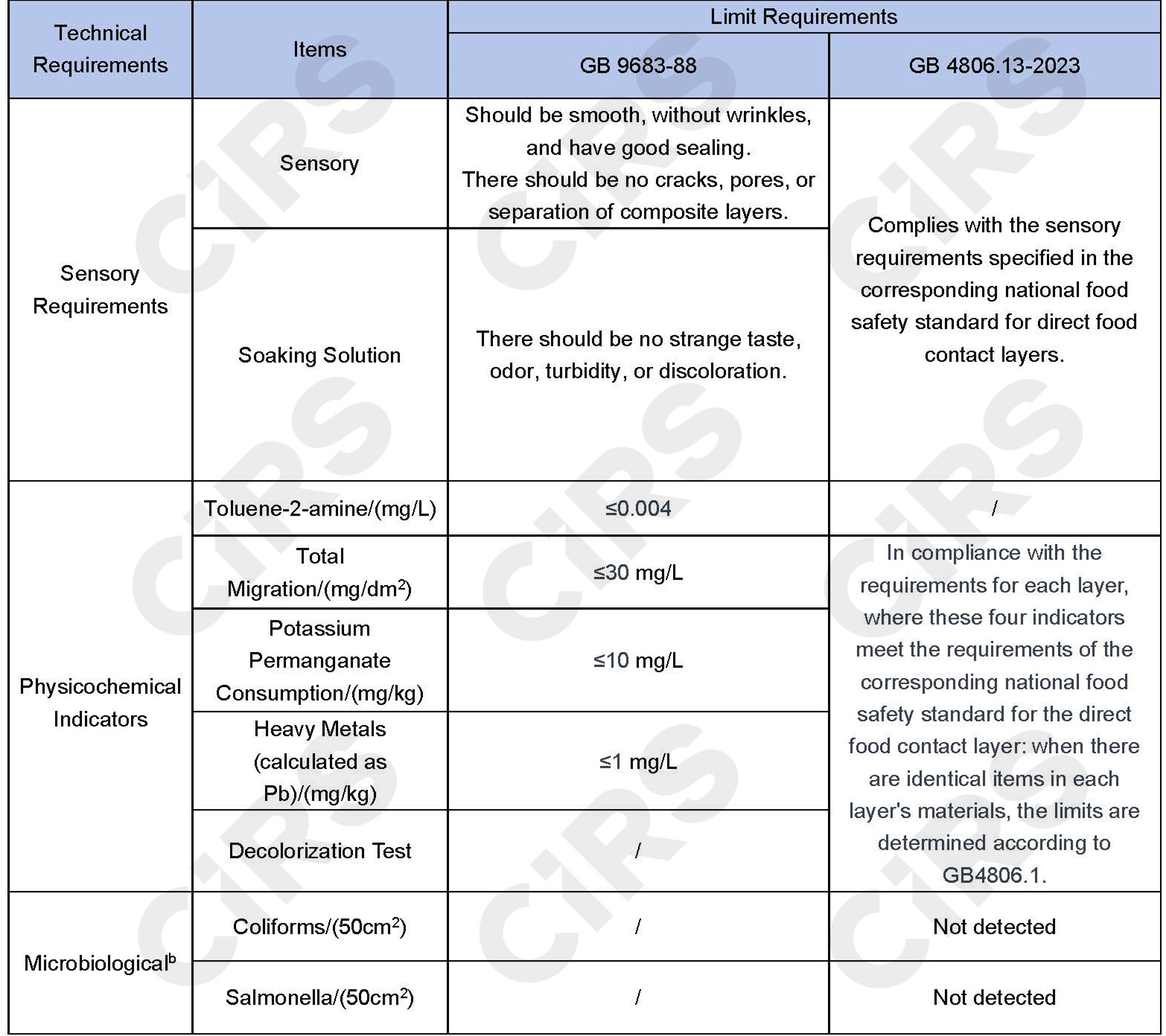On September 25, 2023, China National Health Commission released 85 national food safety standards and 3 amendment notices (NHC Announcement No. 6 of 2023), including 17 standards related to food contact materials, comprising 5 product standards (plastics, metals, rubber, composite materials, inks) and 12 method standards (migration general principles, method validation general principles, specific migration quantity test methods, etc.)."
This article will introduce GB 4806.13-2023 National Food Safety Standard for Food Contact Composite Materials and Articles (hereinafter referred to as the 'Composite Materials Standard'). The official implementation date of this standard is September 6, 2024.
GB 4806.13-2023 will replace GB 9683-1988, the Hygienic Standard for Composite Food Packaging Bags. In comparison with GB 9683-1988, the overall framework and structure of the standard have undergone significant changes. It is primarily aimed at maintaining consistency with other product standards. The specific changes can be summarized as follows:
Table 1: Key Revisions of GB 4806.13-2023 New Standard

Key Points of Concern
As mentioned above, there are significant changes in the technical requirements between the old and new Composite Materials standards, involving sensory, physicochemical indicator and microbiological requirements. A comparison of technical requirements between the old and new standards is shown in Table 2.
Table 2: Comparison of Technical Requirements between GB 4806.13 New and Old Standardsa

aThe items listed in the table do not cover specific migration limits and other physicochemical indicators.
bMicrobiological limits for composite materials and products intended for direct food contact without disinfection or cleaning should comply with GB 14934.
CIRS C&K Testing Reminder
A: Strengthen Quality Control of Raw Materials for Various Materials
Raw materials are the primary factors affecting the safety of composite materials and products. The correct selection and use of raw materials are essential factors influencing the safety of composite materials and products. When purchasing raw materials, strict quality control should be maintained, such as avoiding materials that may produce harmful substances.
B: Control Key Points in the Production Process
In the production process of composite materials and products, processes such as bonding and hot melting are common and may introduce corresponding risks. Therefore, it is recommended to strengthen control over key points in the production process to avoid potential migration risks.
C: Enhance Awareness of Information Communication Up and Down the Supply Chain
Composite materials and products are generally composed of two or more layers of materials and involve multiple production processes. Substances introduced or generated at different stages can potentially affect the compliance of the final product. Therefore, it is recommended to enhance awareness of information communication up and down the supply chain to ensure traceability of information affecting food safety.
CIRS C&K Testing has acquired the full set of technical testing capabilities for the new version of the standard mentioned above, including the newly added elemental indicators. If you have any needs, please get in touch with us via test@cirs-group.com.
